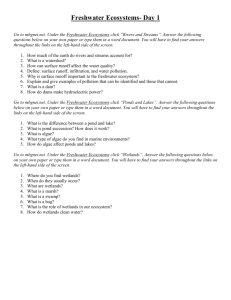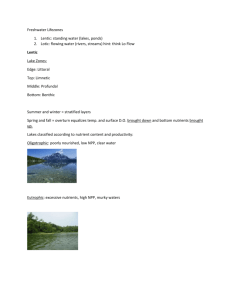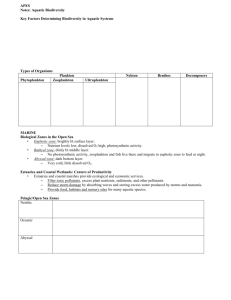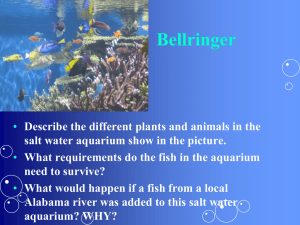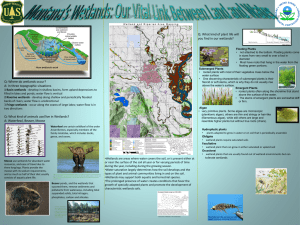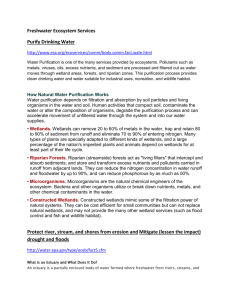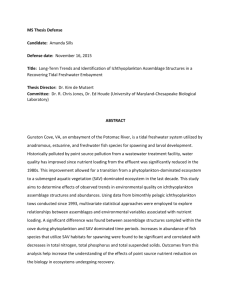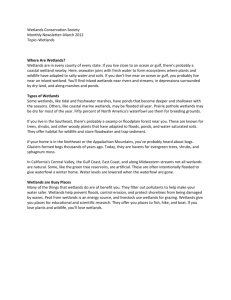Aquatic Biomes
advertisement
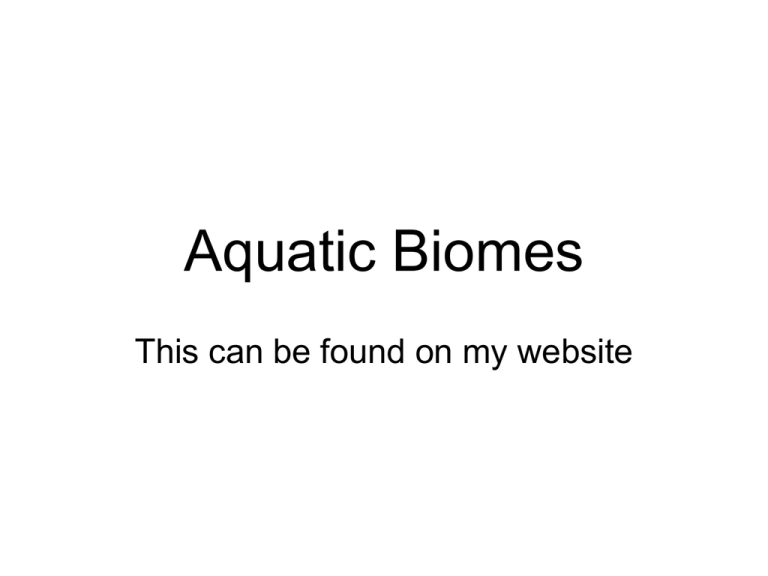
Aquatic Biomes This can be found on my website What factors influence the kind of life an aquatic biome contains? Salinity (how much salt) Depth (related to how much sunlight) Speed of water flow D.O. (dissolved oxygen levels) Zones of Freshwater Lakes Littoral zone- shore line. Nutrient rich and diverse. Contains emergent plants (plants growing out of the water) Benthic zone- muddy bottom. Limnetic zone – open water, floating algae, photic zone Profundal Zone Only found in deep lakes Open water, but no sunlight reaches here (aphotic) Nutrient levels Oligotrophic – Nutrient poor/oxygen rich. Often sources that feed it are glaciers, mountainous regions. Eutrophic- Nutrient rich/oxygen poor. Fed by steams with lots of dissolved minerals but the decaying organic matter increases oxygen demand. Mesotrophic: somewhere in between Freshwater- lakes and ponds Often, newly formed lakes start as oligotrophic and become eutrophic. Eutrophication can be accelerated by pollution that cause algal blooms. (fertilizer runoff, sewage) Freshwater- wetlands covered in water for at least part of the year. Ecosystem services: help to clean and filter water. help to reduce flooding because they can absorb much water. Wetlands - Marshes Marshes are freshwater wetlands that have mostly non-woody plants. Wetlands - bogs A bog is an acidic wetland with low nutrients. Lots of dead moss and other material builds up. peat Wetlands - swamps Swamps are freshwater wetlands that contain woody plants (wetland forest) Wetlands - Estuaries An estuary is where a river runs into an ocean. There is varying salinity in an estuary. May contain salt marsh habitat (marsh with salty water) Brackish = mix of saltwater and freshwater Mangrove swamp (forest) Saltwater swamp. Contain mangrove trees (trees tolerant to salt water) Marine (ocean) biomes Coastal zone – Shoreline out to edge of continental shelf. Intertidal zone – where there are tides, submerged for part of the day, crashing waves (part of coastal zone) Pelagic zone – open ocean. Not near shore, not the bottom muddy area. 3 parts to the pelagic zone (on next slide) Benthic zone – bottom muddy area. Coral reefs - buildup of dead coral skeletons provides habitat. Found in shallow, warm marine areas. Brightly lit so lots of productivity. Probably the most biodiverse biome on the planet! Biological Zones in Pelagic Zone Euphotic zone: brightly lit surface layer. Nutrient levels low, dissolved O2 high, photosynthetic activity. Aphotic zone: little or no sunlight = no photosynthesis Bathyal zone: dimly lit middle layer (twilight zone) No photosynthetic activity, zooplankton and fish live there and migrate to euphotic zone to feed at night. Abyssal zone: dark bottom layer. Very cold, little dissolved O2. Euphotic Zone Continental Shelf Photosynthesis Pelagic zone (Open Ocean) Bathyal Zone Aphotic Zone Abyssal Zone Darkness Coastal Zone
